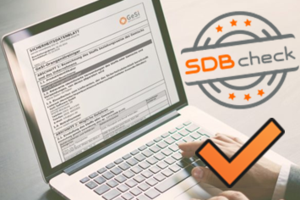REF-6 for mixture SDS: 44% have errors
The results of the latest REACH-EN-FORCE project (REF-6) have been published and directly affect creators and users of the large majority of all safety data sheets – namely safety data sheets of hazardous substance mixtures. In comparison to the first statistics, the results look better as far as classification is concerned, but there is further need for improvement: Almost every second safety data sheet has errors in the legal bases such as classification or labelling.
Data basis
For REF-6, the official evaluations of 1620 examined companies in 28 countries were used and a total of 3391 mixtures were tested.
Summarised results from REF-6
- 44% had at least one deviation from current laws
- 17% of the mixtures had an incorrect classification.
- In 33% of all mixtures examined, the product label was incorrect.
- Deviations in the H statements: 22%
- Deviations in the P statements: 15%
- Deviations in the pictograms: 14%
- Deviations in the signal words: 12%
Consequences of incorrect classifications
The consequences of incorrect classifications are noticeable for both producers as well as consumers: If a manufacturer already receives deviations in the safety data sheets of the mixtures supplied to them, this also has a direct effect on the quality of their own safety data sheets. Users of hazardous substances are interested in the mixture labelling and the measures derived from this for the safe handling of the chemicals. If the classification is incorrect, the hazardous substances are frequently labelled incorrectly as well.
The consequences from the REF-6 studies
What can be deducted from this information? First of all, approximately every fifth mixture has an incorrect classification and approximately every third hazardous substance label contains errors. As a result, I can recommend the following for the use of mixtures: Some scepticism is warranted. It is worthwhile to critically assess classifications and identification labels to prevent unsafe or incorrect handling of the hazardous substances.
Plausibility check: the basis for good occupational health and safety and good safety data sheets.
In safety data sheets, not only the classification of the mixture is specified in Section 2, but also the classification of the relevant ingredients in Section 3. Together with additional information from the safety data sheet, it is possible to determine if the classification and the resulting labelling of the mixture matches the remaining information in the safety data sheet. This can help to detect deviations and alert the manufacturer to possible errors. As a result, the quality of the safety data sheets along the entire supply chain is improved.
Sources: European Chemicals Agency, https://echa.europa.eu/. REACH-EN-FORCE project REF 6


